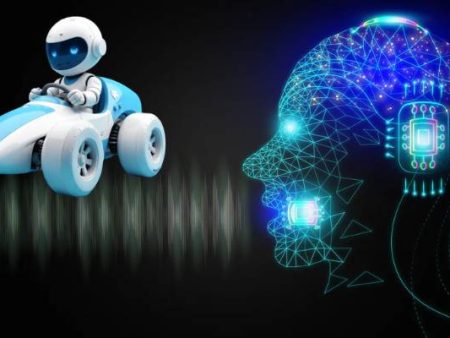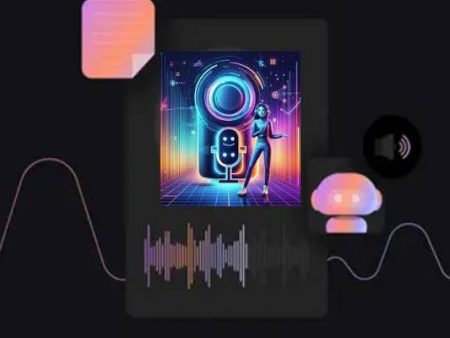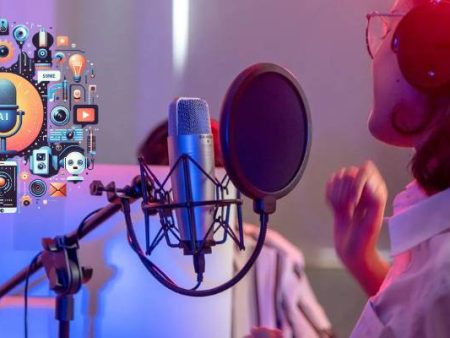Close your eyes for a second and think about the last time you heard an AI-generated voice. Maybe it was Siri reading back your text message, or a chatbot politely confirming your food delivery.
Did it feel human enough to pass, or did something about the pacing, the inflection, the slight lack of warmth give it away?
That’s the burning question many of us are wrestling with today: Can AI voices ever sound truly human? Not just realistic, but convincingly human in the way they hold rhythm, emotional nuance, and personality.
It’s not just a technological curiosity—it’s a question that cuts to the heart of trust, authenticity, and how much we’re willing to let machines step into roles once reserved for people.
This isn’t a quick conversation. It’s one worth unpacking layer by layer: the tech under the hood, the breakthroughs in recent years, the ethical risks of personalisation manipulation, and the strange emotional terrain we’re entering.
Why Human Speech Is So Hard to Replicate
If you’ve ever tried imitating a friend’s voice, you know it’s not just about pitch. Human speech is a wild cocktail of elements:
- Tone and timbre
- Breath patterns
- Pauses and hesitation
- Emotional shifts mid-sentence
- Accents shaped by region and family
According to linguists, there are over 44 distinct phonemes in English alone, and each one can be shaped differently depending on context. No wonder AI has struggled for decades to make sounds voice natural instead of flat.
Speech isn’t just technical—it’s expressive. When your grandmother tells a story, the way her voice quivers at the climax or softens at the memory of a childhood scene adds a richness no algorithm can easily copy.
The Tech Between Race Toward Natural Speech
The modern breakthroughs didn’t come out of nowhere. For years, text-to-speech systems relied on concatenation: stitching together pre-recorded snippets of human speech. That worked okay for GPS devices, but it was robotic and clunky.
The real game-changer was deep learning, specifically generative adversarial networks (GANs) and autoregressive models. Google’s WaveNet in 2016 was the first to generate audio waveforms directly rather than stringing together pre-recorded clips.
Suddenly, voices could breathe, pause, and shift tone in ways that sounded startlingly close to real people.
Fast-forward to today, and companies like ElevenLabs and Microsoft’s Azure AI Speech are pushing things further, offering customizable voices that can narrate audiobooks, customer service calls, and even entire podcasts.
The tech between race isn’t just about who gets the most human-like sound first—it’s about who can do it reliably, at scale, and without crossing ethical lines.
The Subtle Art of Imperfection
Ironically, one of the biggest clues that a voice is synthetic is that it’s too perfect. Humans stammer, draw out syllables, change pitch mid-thought, and sometimes trail off. AI-generated voices, unless designed carefully, tend to smooth those out.
That’s where emotional modeling comes in. Researchers are building datasets that map not just what words sound like, but how they sound when someone is frustrated, joyful, sarcastic, or tired. The goal is to make AI stumble in the right places—to make it natural visually in our minds when we imagine the speaker.
The challenge? Emotion is deeply cultural and subjective. What sounds like warmth in one language might feel overly dramatic in another.
Personalisation Manipulation: The Double-Edged Sword
There’s a marketing side to all this that’s both fascinating and unsettling. Imagine getting a call from your bank, not with a generic AI voice, but one modeled on a local community leader you recognize. It would feel trustworthy, right? But what if that voice never gave consent?
This is where personalisation manipulation creeps in. Customizing voices to suit specific audiences can increase engagement but also exploit familiarity.
A Stanford study showed that people are more likely to follow instructions from a voice they perceive as trustworthy, even when they know it’s synthetic. That kind of influence is powerful—and potentially dangerous.
It raises ethical questions: should AI ever impersonate someone? How do we draw the line between marketing and manipulation?
Applications That Excite and Terrify
Where AI Voices Shine
- Accessibility: People with speech impairments can “speak” again through synthesized voices trained on old recordings of their real voice.
- Audiobooks: Publishers can scale up content for indie authors who couldn’t otherwise afford narration.
- Translation: Imagine listening to a French novel in English but narrated in the author’s original voice, seamlessly.
Where AI Voices Disturb
- Deepfake scams: Scammers clone loved ones’ voices to demand ransom, exploiting the emotional power of sound.
- Political manipulation: Fake campaign messages or speeches could mislead voters, undermining democracy.
- Identity theft: Celebrities and influencers already find their voices cloned without consent to endorse products they’ve never seen.
The same tools that give someone their voice back can be hijacked for fraud. It’s the clearest example of technology being neither good nor bad—only shaped by intent.
Voices Truly Human? The Emotional Gap
Here’s where I get personal: I’ve listened to AI narrations that floored me. A passage in an audiobook, read by a synthetic voice, carried rhythm and emotion so naturally I almost forgot it wasn’t human.
And yet, when the story reached a deeply emotional scene, the cracks showed. The timing was just a little off, the empathy a little shallow. It reminded me that human connection isn’t about perfect pitch—it’s about shared humanity.
Can AI cross that gap? Maybe one day. But for now, there’s a thin layer of difference that still makes me pause.
Statistical Glimpse at Adoption
It’s not just my opinion. The numbers back up the rising dominance of AI voices.
- The voice cloning market is projected to surpass $5 billion by 2032, according to Precedence Research.
- 70% of businesses surveyed by Gartner expect to integrate AI-generated voices into customer service by 2025.
- Audiobook publishers like Apple Books and Google have already begun offering AI-narrated titles in their libraries.
Adoption is happening fast, and listeners often don’t know—or care—whether the voice is synthetic.
The Ethical Divide
We’re standing at a crossroads. One path uses AI voices as tools of empowerment, accessibility, and creativity. The other path leads to erosion of trust, misinformation, and a world where we doubt even the voices of our loved ones.
Regulators are scrambling. The FCC recently banned AI voices in robocalls, while the EU’s AI Act sets strict rules on disclosure. But enforcement lags behind innovation.
As consumers, we also have a role. We can demand transparency—labels that clearly indicate when we’re hearing AI. We can pressure companies to get consent before cloning voices. And we can learn to be cautious when an audio message seems a little too on point.
My Take: Hope, With Reservations
So, can AI voices ever sound truly human? My honest answer: technically yes, emotionally not quite. They’ll probably get close enough that most people won’t notice in everyday settings.
But the spark of lived experience, the subtle imperfections that tell us there’s a soul behind the sound—that might always be a step too far for code.
I don’t think that’s a bad thing. In fact, maybe it’s a blessing. It leaves room for us to value human voices not because machines can’t replicate them, but because we know the difference, and we choose authenticity when it matters most.
At the same time, I see promise. A child hearing their late parent’s voice reading bedtime stories again. A stroke survivor regaining speech.
A writer in a small town having their novel brought to life without prohibitive costs. That’s powerful, and it reminds me why this technology deserves a careful but open mind.
Conclusion: Navigating the Gray
The future of AI voices won’t be black and white. It’ll live in the gray space between innovation and exploitation, empowerment and deception. The key is to navigate that space consciously.
We should marvel at the sounds voice that now come from algorithms, but also question the motives when they’re used in advertising or politics. We should push for a balance where technology enhances storytelling, accessibility, and communication, without eroding trust.
Because at the end of the day, voices aren’t just sounds—they’re identities, emotions, connections. If AI can help us hear more of them without silencing the real ones, then maybe that’s the balance we should aim for.


